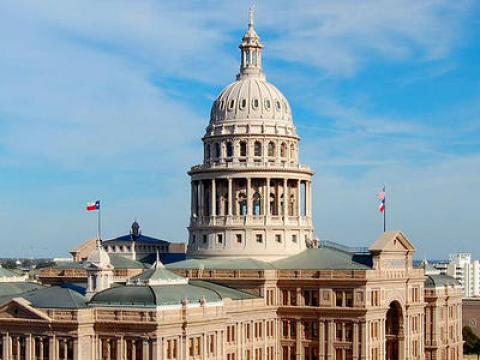Who's watching state lawmakers?
It's no secret that, with the decline in newspapers and other traditional "legacy" media, the number of statehouse reporters -- those assigned to cover news in legislatures, governor's offices and state agencies -- has drastically declined.
A new report from Pew Research breaks down the numbers: Since 2003, the number of full-time reporters covering state politics for daily newspapers has declined 35 percent. Of the 1,592 statehouse reporters, under half (741) are sent to cover state politics full-time.
And while less than a third of newspapers assign a reporter to statehouse coverage, they are still the biggest news source for state political news, supplying 38 percent of the statehouse reporters.
The end result is that, even as key policy decisions fall to the states, the number of statehouse reporters is shrinking, even in states where the population is growing.
A Facing South/Institute for Southern Studies analysis of the Pew data shows that Southern states have a greater imbalance between the number of full-time statehouse reporters and the number of state residents they are tasked with keeping informed. Pew says the national average is one statehouse reporter for every 373,777 people; in the South, the average is one for every 414,363 residents, as the chart below shows:
What about "nontraditional" sources of news, like websites and nonprofit media outfits? Pew found that such operations "have sprung up to try to fill the gaps in coverage," but they still account for only 16 percent of all statehouse reporters.
In some cases, they've filled the void admirably: The nonprofit Texas Tribune, with 15 full-time, year-round reporters and 10 students, "has the largest statehouse bureau of any news organization in the country," according to Pew.
Ideological groups have also stepped up to fill the void in state politics coverage. But Pew found these are dominated by conservative-leaning organizations; "about half" of the ideological websites with statehouse reporters (14 out of 33) are owned by the Franklin Center for Government & Public Integrity, which run the Watchdog.org sites.
According to Pew, of the ideological state politics sources, "Only one outlet, NC Policy Watch, calls itself progressive."
What do these trends mean for the everyday public? As Reid Wilson of The Washington Post observes, the decline of statehouse reporters both reflects and perpetuates a disconnect between where important policy decisions are happening and what kind of news coverage the state residents receive:
"There is a paradox in the reality of American politics: The more local an office, the more of an impact it has on any given person’s daily life. Yet the more local an election, the lower the voter interest. Presidential elections drive turnout. State legislators, who decide funding levels for local transportation projects or school districts and who have more influence on the average person’s life than the president of the United States, do not. Now, there is less coverage of those legislators than ever before."
[Chris Kromm is a reporter for Facing South, a publication of the Institute for Southern Studies]


Spread the word